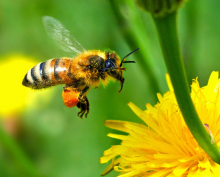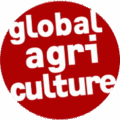
Smallholder farmers could significantly increase their crop yields by attracting more bees and other pollinators to their land, new research suggests. The study, published in the journal Science, quantifies to what degree enhancing pollinator density and richness can improve yields, which may be especially important for the two billion people who rely on small farms, many of which are undernourished. “Our research shows that improving pollinator density and diversity – in other words, making sure that more and more different types of bees and insects are coming to your plants – has direct impact on crop yields,” said Barbara Gemmill-Herren, one of the authors of the study. The scientists compared 344 fields from 33 pollinator-dependent crop systems in small and large farms across Africa, Asia and Latin America. They found that crop yields were significantly lower in farming plots that attracted fewer bees during the main flowering season than in those plots that received more visits. Their comparison of high-performing and low-performing farms of less than 2 hectares showed that small-scale farmers could increase their yields by on average 24 percent by attracting more pollinators to their land. While larger fields also benefited from more pollinator visits, the impact on yields was less significant than in smaller plots. However, attracting pollinators to farms requires some effort. Maintaining habitat and forage resources all year long is key to keeping them on the land for longer periods of time. This can be achieved by planting different trees and plants that flower at different times in the year, the scientists said. In addition, reducing the use of pesticides and maintaining flowering hedge rows around the farm and mulch on the ground where bees can hide are other strategies to attract pollinators. Since different pollinators have distinct tastes, the diversity of pollinators, each with different flight capacities, can make the difference. Bumble bees, for example, are one of the few types of bees that can successfully pollinate tomatoes, which heavily rely on buzz pollination to bear fruit. Honey bees, in turn, are less picky in their choice of flowers while wild bees are more effective in fertilizing the plants they’re attracted to. “The take away from our study is that bees provide a real service and should be taken into account when we plan food security interventions,” said Nadine Azzu, one of the authors. “And the best part is: their service is free.” (ab)
